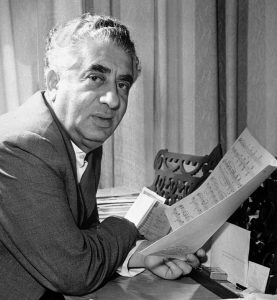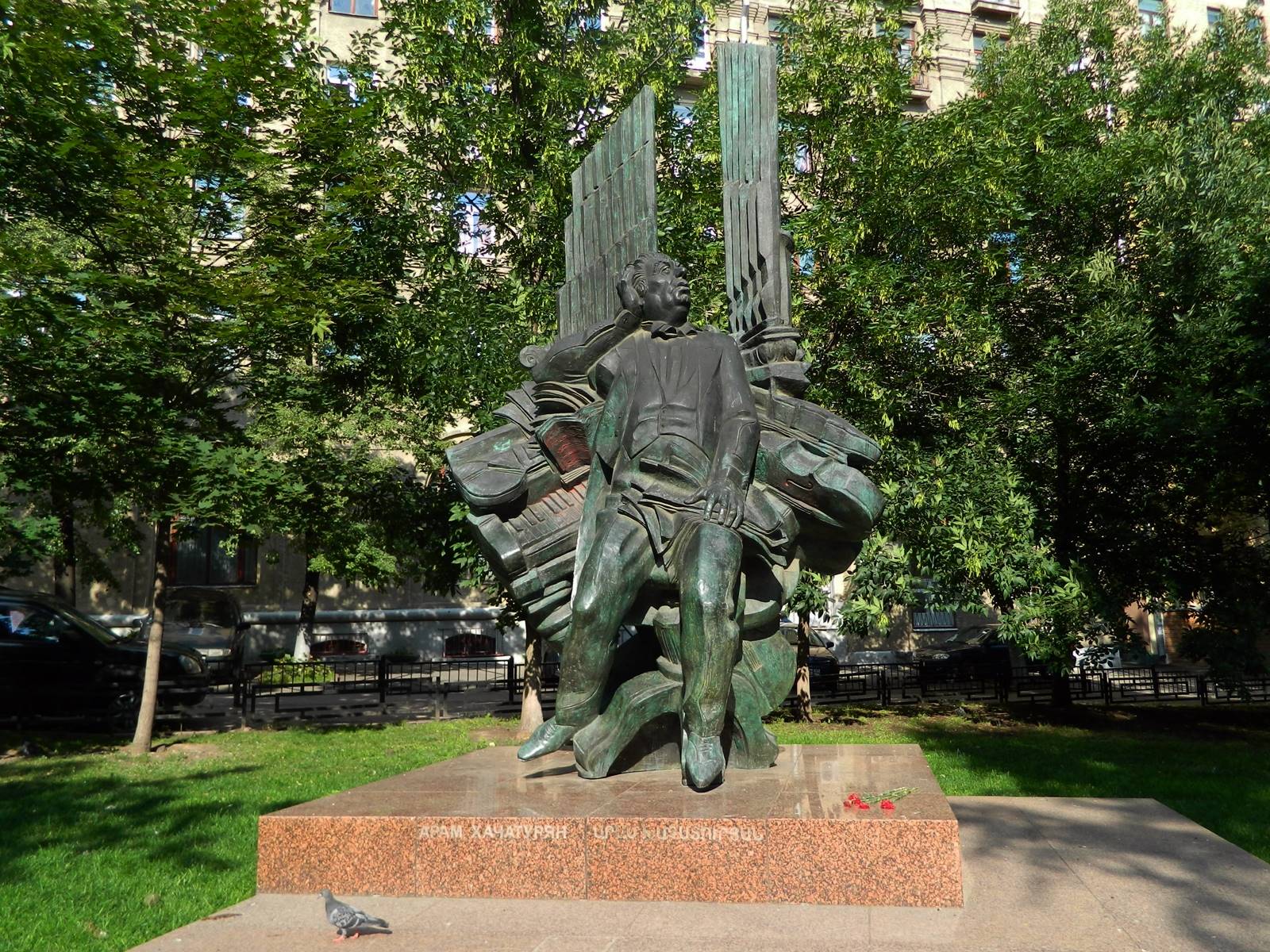Aram Ilyich
Khachaturyan
1903-1978

Aram Ilyich Khachaturyan was one of the most famous Soviet composers, the author of three symphonies and three ballets, six instrumental concertos, many individual works for orchestra and various chamber ensembles, various pieces for violin, cello and piano, and music for theatre productions and films. He was born in Tiflis (now Tbilisi) on 6 June, 1903 into the family of a bookbinder. He moved to Moscow at the age of 18. In 1929 he graduated from Gnessin Music School in the composition class of Mikhail Gnessin, and in 1934 from the Moscow Conservatory in the composition class of Nikolai Myaskovsky. Khachaturyan’s creative career were good. His First Symphony (1934), Piano Concerto (1936) and his first ballet, Happiness (1939), immediately brought him fame, even glory. In 1942, the ballet was reworked and performed under the new title Gayane. It was for this version that Sabre Dance was composed, which became one of Khachaturyan’s most popular works. In 1943 the composer completed his Second Symphony. In 1944 he wrote the music for the national anthem of the Armenian SSR. In 1946-1947 he composed the Cello Concerto and the Third Symphony. In 1950 Khachaturyan was invited to teach at Gnessin Music and Pedagogical Institute, and in 1951 he also took up a professorship at the Moscow Conservatory. He trained composers such as Mikael Tariverdiev, Andrei Eshpai and many others. In 1954 Aram Ilyich was awarded the title of People’s Artist of the USSR. In the same year the composer completed his best work – the ballet Spartacus. In memory of the great composer a monument was erected in Moscow, in Brusov lane. The authors of the monument were the sculptor Georgy Frangulyan and the architect Igor Voskresensky. The figure of the composer is made of bronze and stands on a small granite platform, on which his name and surname are engraved in two languages – Russian and Armenian. The monument shows Khachaturyan in a moment of inspiration, next to a piano, organ and cello, with music on his lap. The location in Brusov lane was not chosen by chance: it is not far from the house where Khachaturyan lived. Nearby are the Moscow Conservatory and the Moscow House of Composers.
Address: Moscow, Bryusov lane, 8-10, p. 1

